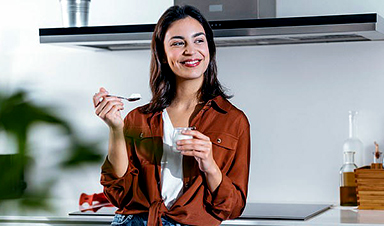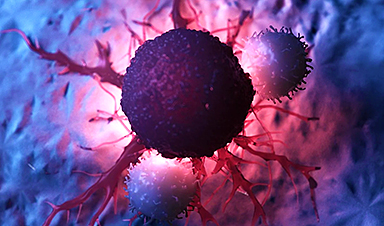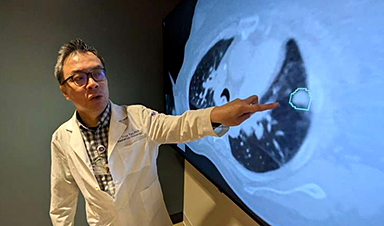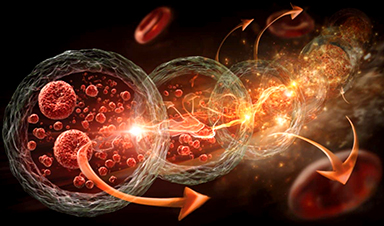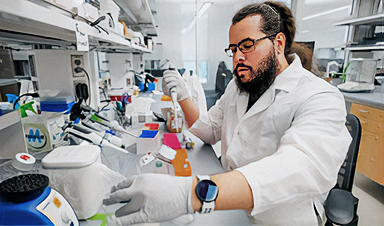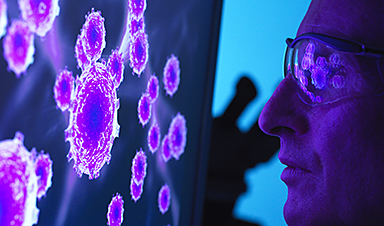| (Nanowerk News) Cleaning up after a major oil spill is a long, expensive process, and the damage to a coastal region’s ecosystem can be significant. This is especially true for the world’s Arctic region, where newly opened sea lanes will expose remote shorelines to increased risks due to an anticipated rise in sea traffic. | |
| Current mitigation techniques even in heavily populated regions face serious limitations, including low oil absorption capacity, potential toxicity to marine life and a slow remediation process. | |
| However, advances in nanotechnology may provide solutions that are more effective, safer and work much faster than current methods. That’s according to a new paper in Environmental Science: Nano (“Nanotechnology for oil spill response and cleanup in coastal regions”) by a Concordia-led team of researchers. | |
| “Using nanomaterials as a response method has emerged as a promising sustainable approach,” says lead author Huifang Bi, a PhD candidate in the Department of Building, Civil and Environmental Engineering at the Gina Cody School of Engineering and Computer Science. | |
| “This paper synthesizes, reviews and analyzes between 40 and 50 studies on the subject to give us a big-picture look of the status of nanotechnologies in coastal oil spill response. At the same time, we are also presenting our own suggestions and identifying research gaps between using nanomaterials in the lab and how they can be used in real-world applications.” | |
| She adds that nanomaterials are being widely studied to combat marine oil spills, but she is focusing specifically on coastline remediation. She estimates that more than 90 per cent of the papers she reviewed were exclusively lab-based and not yet available for field use. | |
Encouraging results need field testing |
|
| The unique properties found in nanomaterials can help mitigation across different remediation efforts. These include surface washing agents, dispersants, sorbents and bioremediation. Each method has its own strengths and drawbacks that can be improved with the use of nanomaterials. | |
| For instance, replacing synthetic surfactants and organic solvents with bio-based nanomaterials has shown to be both highly effective at removing oil and to produce less toxic substances that can harm coastal biotas. | |
| Nanomaterials can also be used in dispersants. Clay-based nanomaterials can stabilize oil particles in an emulsion, resulting in a larger area for oil-eating bacteria to grow and accelerating oil disappearance. In sorbents like aerogels or foams, nanomaterials can improve the removal of oil from water by absorption, adsorption or a combination thanks to large surface areas and a high number of sorption sites. | |
| Finally, they can also be used to accelerate bioremediation, a technique that uses microorganisms to break down harmful pollutants like oil into less harmful or harmless substances. | |
| “While these lab-based results are encouraging, we need to exercise caution,” warns Bi, winner of a 2023 Vanier Canada Graduate Scholarship. “We should prioritize the use of sustainable and eco-friendly nanomaterials to minimize environmental risks and ensure the responsible application of nanotechnology in coastal oil spill response. We also need to scale up testing to measure this efficacy in field tests.” | |
| According to Bi’s thesis supervisor Chunjiang An, an associate professor in the same department, the emergence of nanomaterials as oil spill remediation tools is coming at a critical time. | |
| “We are facing many new challenges, with threats of oil spills now affecting both traditional and new regions, including the Arctic,” he says. “We need to work with governments and the private sector to ensure that they are aware of these technologies and can further include them in their future remediation guidelines.” |
| Source: By Patrick Lejtenyi, Concordia University (Note: Content may be edited for style and length) |
News
Scientists discover cancer-fighting bacteria that ‘soak up’ forever chemicals in the body
A family of healthy bacteria may help 'soak up' toxic forever chemicals in the body, warding off their cancerous effects. Forever chemicals, also known as PFAS (per- and polyfluoroalkyl substances), are toxic chemicals that [...]
Johns Hopkins Researchers Uncover a New Way To Kill Cancer Cells
A new study reveals that blocking ribosomal RNA production rewires cancer cell behavior and could help treat genetically unstable tumors. Researchers at the Johns Hopkins Kimmel Cancer Center and the Department of Radiation Oncology and Molecular [...]
AI matches doctors in mapping lung tumors for radiation therapy
In radiation therapy, precision can save lives. Oncologists must carefully map the size and location of a tumor before delivering high-dose radiation to destroy cancer cells while sparing healthy tissue. But this process, called [...]
Scientists Finally “See” Key Protein That Controls Inflammation
Researchers used advanced microscopy to uncover important protein structures. For the first time, two important protein structures in the human body are being visualized, thanks in part to cutting-edge technology at the University of [...]
AI tool detects 9 types of dementia from a single brain scan
Mayo Clinic researchers have developed a new artificial intelligence (AI) tool that helps clinicians identify brain activity patterns linked to nine types of dementia, including Alzheimer's disease, using a single, widely available scan—a transformative [...]
Is plastic packaging putting more than just food on your plate?
New research reveals that common food packaging and utensils can shed microscopic plastics into our food, prompting urgent calls for stricter testing and updated regulations to protect public health. Beyond microplastics: The analysis intentionally [...]
Aging Spreads Through the Bloodstream
Summary: New research reveals that aging isn’t just a local cellular process—it can spread throughout the body via the bloodstream. A redox-sensitive protein called ReHMGB1, secreted by senescent cells, was found to trigger aging features [...]
AI and nanomedicine find rare biomarkers for prostrate cancer and atherosclerosis
Imagine a stadium packed with 75,000 fans, all wearing green and white jerseys—except one person in a solid green shirt. Finding that person would be tough. That's how hard it is for scientists to [...]
Are Pesticides Breeding the Next Pandemic? Experts Warn of Fungal Superbugs
Fungicides used in agriculture have been linked to an increase in resistance to antifungal drugs in both humans and animals. Fungal infections are on the rise, and two UC Davis infectious disease experts, Dr. George Thompson [...]
Scientists Crack the 500-Million-Year-Old Code That Controls Your Immune System
A collaborative team from Penn Medicine and Penn Engineering has uncovered the mathematical principles behind a 500-million-year-old protein network that determines whether foreign materials are recognized as friend or foe. How does your body [...]
Team discovers how tiny parts of cells stay organized, new insights for blocking cancer growth
A team of international researchers led by scientists at City of Hope provides the most thorough account yet of an elusive target for cancer treatment. Published in Science Advances, the study suggests a complex signaling [...]
Nanomaterials in Ophthalmology: A Review
Eye diseases are becoming more common. In 2020, over 250 million people had mild vision problems, and 295 million experienced moderate to severe ocular conditions. In response, researchers are turning to nanotechnology and nanomaterials—tools that are transforming [...]
Natural Plant Extract Removes up to 90% of Microplastics From Water
Researchers found that natural polymers derived from okra and fenugreek are highly effective at removing microplastics from water. The same sticky substances that make okra slimy and give fenugreek its gel-like texture could help [...]
Instant coffee may damage your eyes, genetic study finds
A new genetic study shows that just one extra cup of instant coffee a day could significantly increase your risk of developing dry AMD, shedding fresh light on how our daily beverage choices may [...]
Nanoneedle patch offers painless alternative to traditional cancer biopsies
A patch containing tens of millions of microscopic nanoneedles could soon replace traditional biopsies, scientists have found. The patch offers a painless and less invasive alternative for millions of patients worldwide who undergo biopsies [...]
Small antibodies provide broad protection against SARS coronaviruses
Scientists have discovered a unique class of small antibodies that are strongly protective against a wide range of SARS coronaviruses, including SARS-CoV-1 and numerous early and recent SARS-CoV-2 variants. The unique antibodies target an [...]

